History of cashew cultivation in the world in general and Vietnam in particular
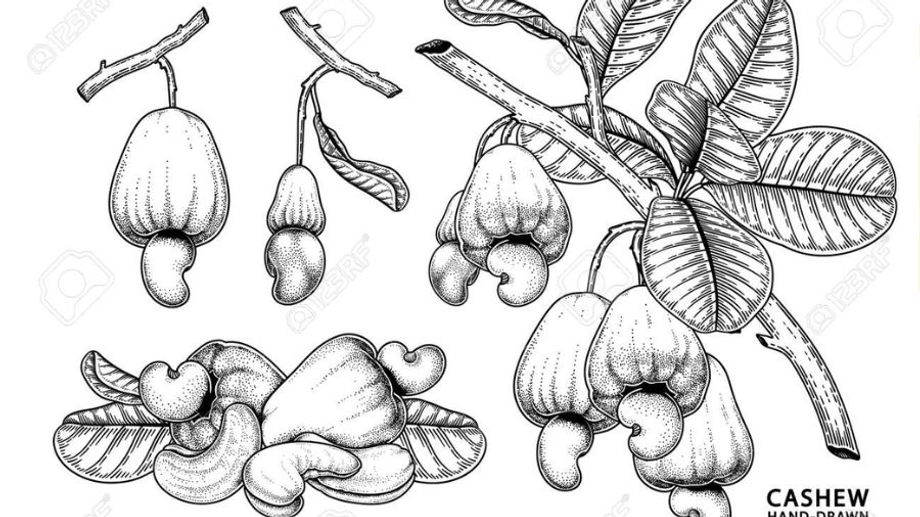
Mục lục
Cashew is a perennial crop with high economic and nutritional value. How is cashew formed and developed? Development stages of the Vietnamese cashew industry. What is the current cashew nut production market like? What is the economic potential of our country's cashew nut exports today? Let's analyze this in the following article.

History of Cashew Cultivation in the World
The global cashew processing industry is growing strongly and there is a preference for cashew nuts in the diet. Here is some information about the cashew market:
History of cashew cultivation
Cashew trees (Anacardium occidentale) originated in the Northeast of Brazil. Initially, the trees grew wild on coastal sandbanks and some wastelands. Since the 16th century, the Portuguese brought cashew trees to India, Malaysia and some East African countries. Today, cashew trees are widely grown throughout tropical Asian countries.

In Vietnam, cashew trees were introduced in the 1980s and later became a multi-purpose industrial crop. Cashew trees are widely grown in the provinces of the Southeast, Central Highlands and South Central Coast, Ba Ria - Vung Tau, such as Binh Phuoc, Dong Nai, Lam Dong, Dak Lak, Binh Thuan, Dak Nong, and many other places. Vietnam is currently the country with the largest export output of cashew nuts in the world. Cashews are usually grown only in the southern provinces, especially the provinces of the Central Highlands and Southeast.
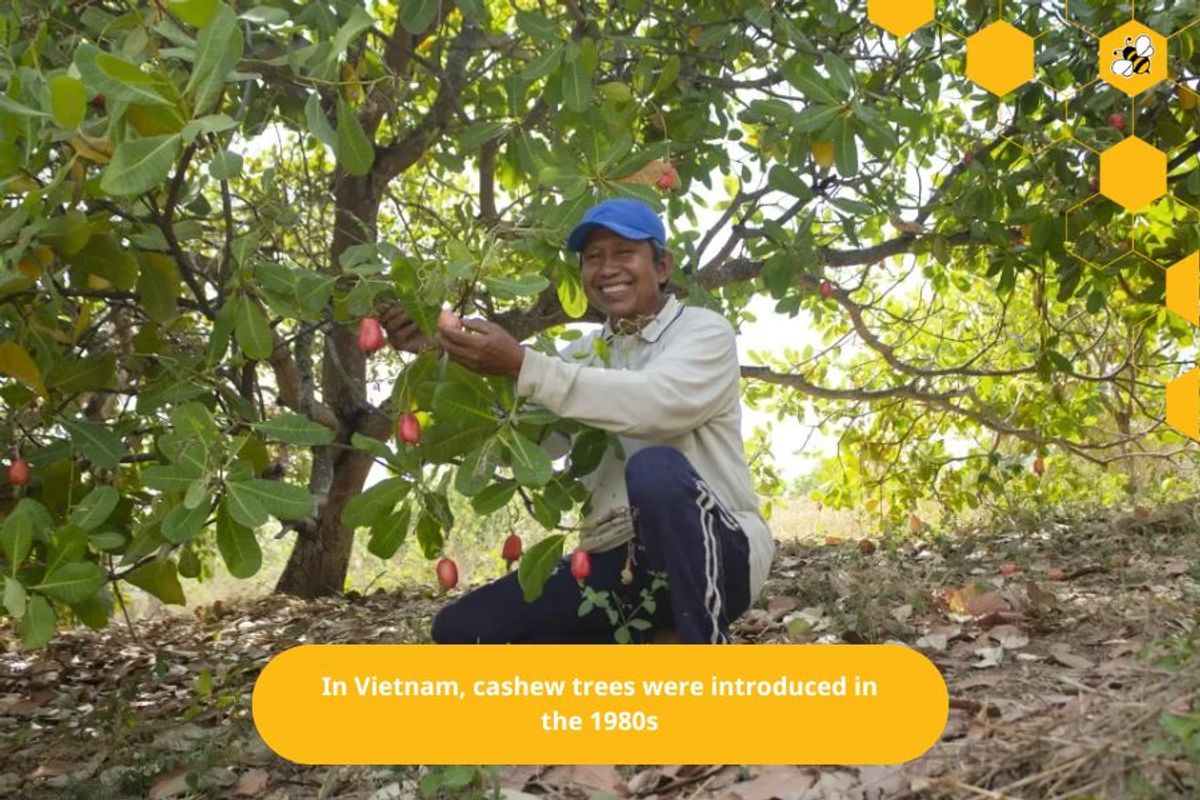
Thus, cashews has gone through a diverse development history and play an important role in the global market
Global Cashew Nut Market Size
Currently, the cashew nut market size is showing a growing trend in both Vietnam and the world. Below is some information about the global cashew nut market size:
Vietnam
Vietnam is the world's largest producer and exporter of processed cashew nuts.
The Vietnam Cashew Association (Vinacas) forecasts that the global cashew market will grow by an average of 4.6% per year from 2022 to 2027.
In Vietnam, the market is expected to reach US$7 billion by 2026.
Vietnam's cashew exports have expanded to more than 85 countries over the past 8 years. Vietnam is the largest supplier of cashews to the United States, China, Australia, Canada, New Zealand, and the Netherlands.
In Vietnam, the market is expected to reach US$7 billion by 2026.
Vietnam's cashew exports have expanded to more than 85 countries over the past 8 years. Vietnam is the largest supplier of cashews to the United States, China, Australia, Canada, New Zealand, and the Netherlands.

Global
The cashew market is expected to reach US$7.82 billion in 2024 and is forecast to increase to US$9.20 billion by 2029. The compound annual growth rate (CAGR) over the forecast period (2024-2029) is 3.31%.
The global trend favors vegan and plant-based diets, leading to increased demand for nuts and nut-based foods.
Innovative products such as cashew butter yogurt in the US and spiced roasted cashews in India appeal to consumers young and old.
Cashews are used in a variety of savory and sweet dishes, especially in Asian cuisine.
The demand for flavored cashews is growing and favorable government initiatives are promoting cashew consumption in many regions of the world.
Thus, cashews are among the important nuts in Vietnam and contribute about 45% to the global production among all cashew-producing countries. Vietnam’s production and harvested area are expected to continue to grow over the forecast period.
The global trend favors vegan and plant-based diets, leading to increased demand for nuts and nut-based foods.
Innovative products such as cashew butter yogurt in the US and spiced roasted cashews in India appeal to consumers young and old.
Cashews are used in a variety of savory and sweet dishes, especially in Asian cuisine.
The demand for flavored cashews is growing and favorable government initiatives are promoting cashew consumption in many regions of the world.
Thus, cashews are among the important nuts in Vietnam and contribute about 45% to the global production among all cashew-producing countries. Vietnam’s production and harvested area are expected to continue to grow over the forecast period.
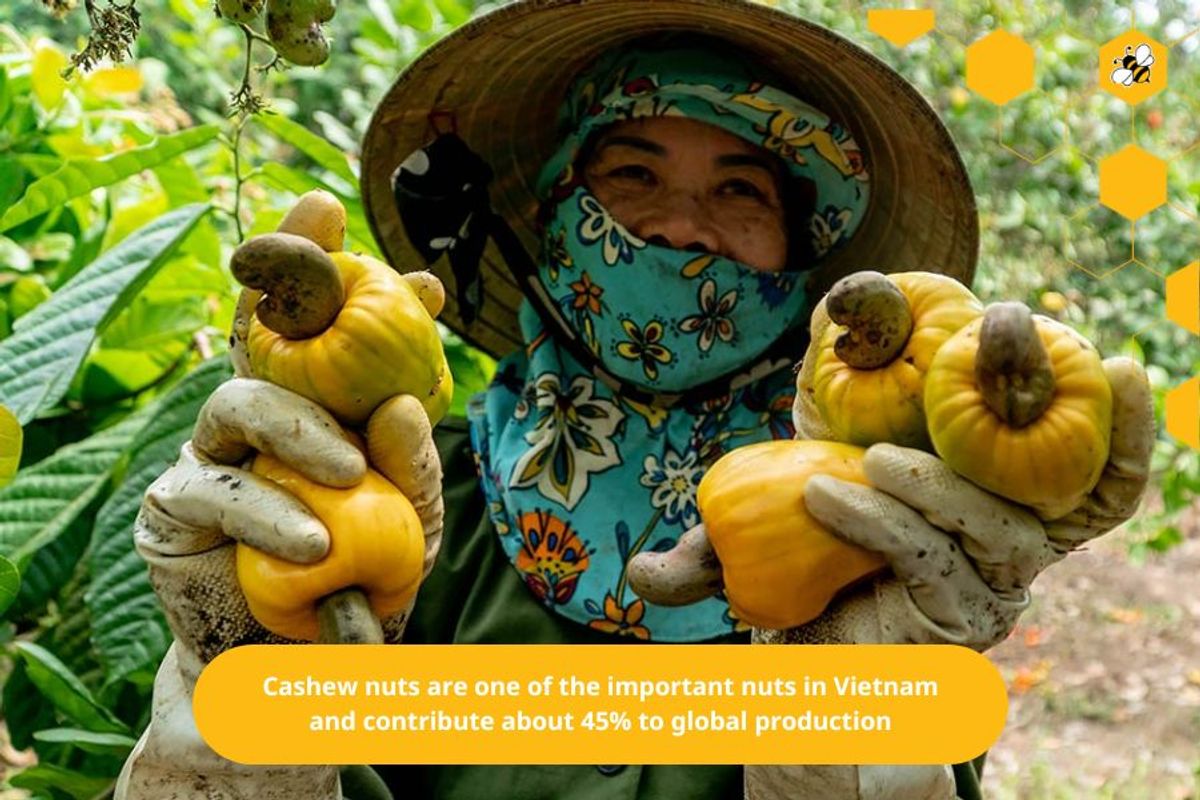
Cashew Nut Market Trends
Cashew nuts are not only a snack but are also used in a variety of dishes, including mueslis, energy bars, cookies, chocolates, and ice cream.
Contains a variety of nutrients, such as copper, and cashews help improve bone health.
Contains a variety of nutrients, such as copper, and cashews help improve bone health.
Vietnam Cashew Nut Export Market
Vietnam's cashew nut export market is huge. Currently, Vietnam is the world's largest producer and exporter of processed cashew nuts. The Vietnam cashew nut market is expected to grow at a CAGR of 5.0% during the forecast period. From 2022 to 2027, the global cashew nut market is expected to grow at an average of 4.6% per year. In Vietnam, the market has been predicted to reach USD 7 billion by 2026. This is the country with the largest cashew nut export output in the world. In 2021, Vietnam's cashew industry recorded an export volume of 579,800 tons and a value of 3.64 billion USD. Vietnam's cashew exports have expanded to more than 85 countries in the past 8 years, including the United States, China, the Netherlands, Australia, Canada and New Zealand. This shows the rapid development of Vietnam's cashew industry and its potential for future growth.
In short, the cashew market is promising and makes an important contribution to the global economy.

History of cashew cultivation in Vietnam
The history of cashew cultivation in Vietnam has a remarkable development process. Below is some information about the history and process of cashew cultivation in Vietnam:
Origin and origin of cashew trees
Cashew trees (also known as cashew nuts, scientific name: Anacardium occidentale) originated in the Northeast of Brazil. Cashew trees grow wild on beaches and in some wastelands. Since the 16th century, cashew trees were brought by the Portuguese to India, Malaysia, and some East African countries to plant. Today, cashew trees are widely grown in tropical Asian countries. Cashews are often grown in tropical climates with coordinates from 30 degrees North to 30 degrees South. Cashews are grown in up to 50 countries and the largest cashew-growing areas are India, Mozambique, Brazil, Malaysia, Sri Lanka, Philippines, Tanzania, Nigeria, and Kenya.
Development of the cashew industry in Vietnam
Cashews are a perennial industrial crop. Around the 18th century, the French brought cashews to grow and develop in Vietnam. However, the history of cashew production and processing in Vietnam has only been formed and developed in the last three decades. Vietnam is currently the country with the largest cashew nut export output in the world. Cashews are usually only grown in the southern provinces of Vietnam, especially in the Central Highlands, Southeast, and a few in the western provinces. Currently, the provinces with the largest cashew-growing areas include Binh Phuoc, Dak Lak, Dong Nai, Binh Dinh, and Binh Thuan.
Characteristics of cashews
Cashews are a perennial industrial crop with an average lifespan of about 40 - 50 years. This type of tree will usually give a stable yield from the 10th year. Detailed characteristics of the cashew tree include:
Cashew roots: Taproot type, with strong root development.
Cashew trunk: Woody trunk, wide canopy.
Cashew leaves: Simple leaves, round oval, alternate, short petioles.
Vietnam is currently the world's leading exporter of cashew nuts. Cashew trees are often grown in the southern provinces such as the Central Highlands and the Southeast.
Cashew roots: Taproot type, with strong root development.
Cashew trunk: Woody trunk, wide canopy.
Cashew leaves: Simple leaves, round oval, alternate, short petioles.
Vietnam is currently the world's leading exporter of cashew nuts. Cashew trees are often grown in the southern provinces such as the Central Highlands and the Southeast.
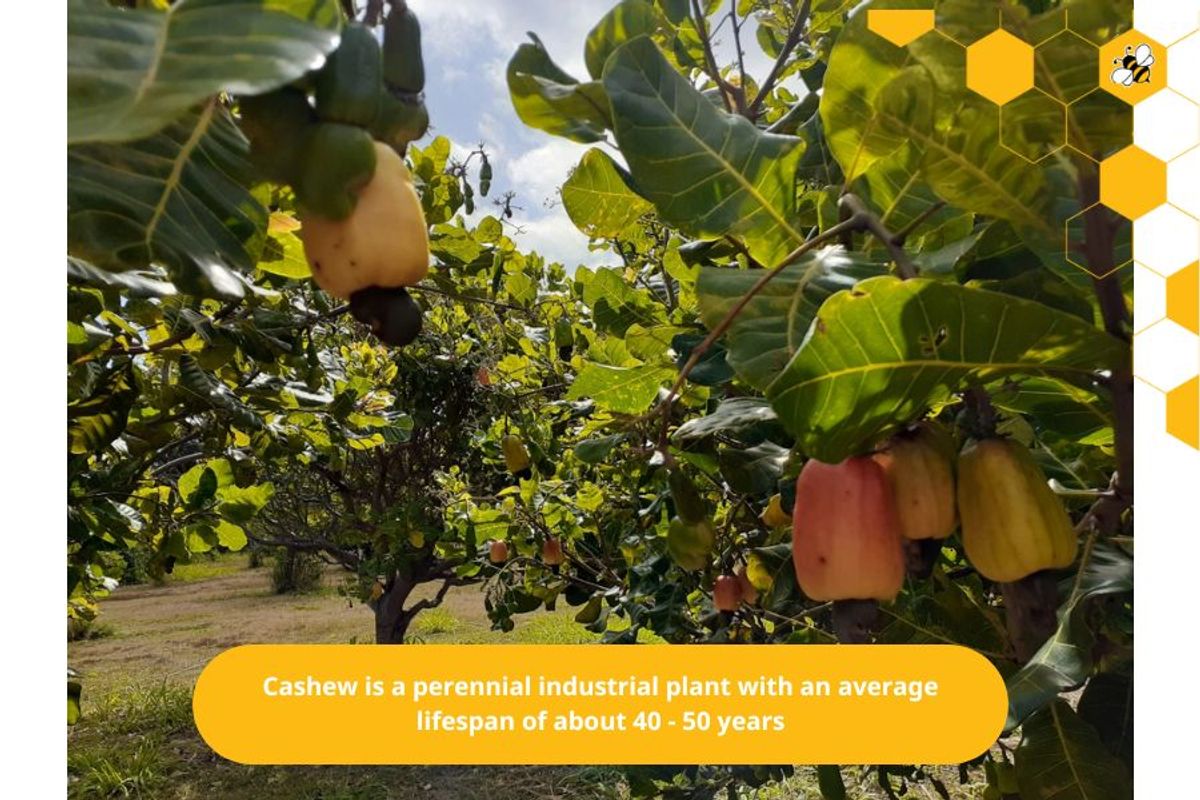
History of the formation of the cashew industry in Vietnam
The history of the formation of the cashew industry in Vietnam has gone through many important stages of development. Below are some highlights of the formation and development of the cashew industry:
Period 1988 - 1995: This is the newly formed stage of the cashew industry in Vietnam. In 1988, the cashew production and processing industry in Vietnam was formed with the establishment of the Vietnam Cashew Association (VINACAS) in 1990. In 1992, Vietnamese cashews began to be exported to the Chinese and American markets.
Period 1996 - 2000: During this period, Vietnam stopped exporting raw cashews and became an importer of raw cashews from African countries. At the same time, Vietnam ranked second in the world in terms of raw cashew production.
Period 2000 - 2005: Vietnam continued to develop strongly, ranking second in the world in cashew nut exports. Cashew nut processing technology was also improved, especially the technology of peeling silk and cashew nut hard shell separating machine.
Period 1988 - 1995: This is the newly formed stage of the cashew industry in Vietnam. In 1988, the cashew production and processing industry in Vietnam was formed with the establishment of the Vietnam Cashew Association (VINACAS) in 1990. In 1992, Vietnamese cashews began to be exported to the Chinese and American markets.
Period 1996 - 2000: During this period, Vietnam stopped exporting raw cashews and became an importer of raw cashews from African countries. At the same time, Vietnam ranked second in the world in terms of raw cashew production.
Period 2000 - 2005: Vietnam continued to develop strongly, ranking second in the world in cashew nut exports. Cashew nut processing technology was also improved, especially the technology of peeling silk and cashew nut hard shell separating machine.
Period 2006 - 2010: Vietnam achieved a cashew nut export turnover of over 1 billion USD, becoming a billion-dollar industry in Vietnam. The "Vietnam Golden Cashew" Festival was also held in the cashew nut capital of Binh Phuoc.
Period 2011 - 2015: Vietnam overcame difficulties due to economic recession and continued to maintain its leading position in the world in cashew nut exports.
Period 2016 - present: This is a period of strong development of our country's cashew nut production and processing industry. Focusing on developing cashew nut processing technology has brought success and competitive advantages to the Vietnamese cashew industry. From 2018 to now, Vietnam's cashew export value has always reached over 3 billion USD with strong development and growth in both quantity and capacity of cashew processing facilities. With the emergence of the COVID-19 pandemic in early 2020, our country's cashew industry has encountered many difficulties, but we can still export with a total value of 3.28 billion USD (according to the General Statistics Office). In 2021, for the first time, our country's cashew industry had a cashew trade deficit, marking a difficult milestone in the shortage of raw materials for production in the cashew industry, this is also a difficult problem that businesses in the industry are having to find ways to solve to develop in the new stage of cashew.
Period 2016 - present: This is a period of strong development of our country's cashew nut production and processing industry. Focusing on developing cashew nut processing technology has brought success and competitive advantages to the Vietnamese cashew industry. From 2018 to now, Vietnam's cashew export value has always reached over 3 billion USD with strong development and growth in both quantity and capacity of cashew processing facilities. With the emergence of the COVID-19 pandemic in early 2020, our country's cashew industry has encountered many difficulties, but we can still export with a total value of 3.28 billion USD (according to the General Statistics Office). In 2021, for the first time, our country's cashew industry had a cashew trade deficit, marking a difficult milestone in the shortage of raw materials for production in the cashew industry, this is also a difficult problem that businesses in the industry are having to find ways to solve to develop in the new stage of cashew.
Thus, up to 2021, after more than 30 years of development, Vietnam's cashew processing and production industry has achieved many successes. From the early 1990s with an export value of only about 1.4 million USD with 286 tons, up to now, our country's cashew industry has achieved an export turnover of more than 3 billion USD with more than 450 thousand tons of kernels (according to Vinacas statistics). That achievement has helped Vietnam continuously maintain its position as the world's number one cashew nut exporter for more than 15 years since 2006, becoming the world's cashew nut production center, exporting to more than 90 countries and territories with about 80% of the world's cashew nut exports.
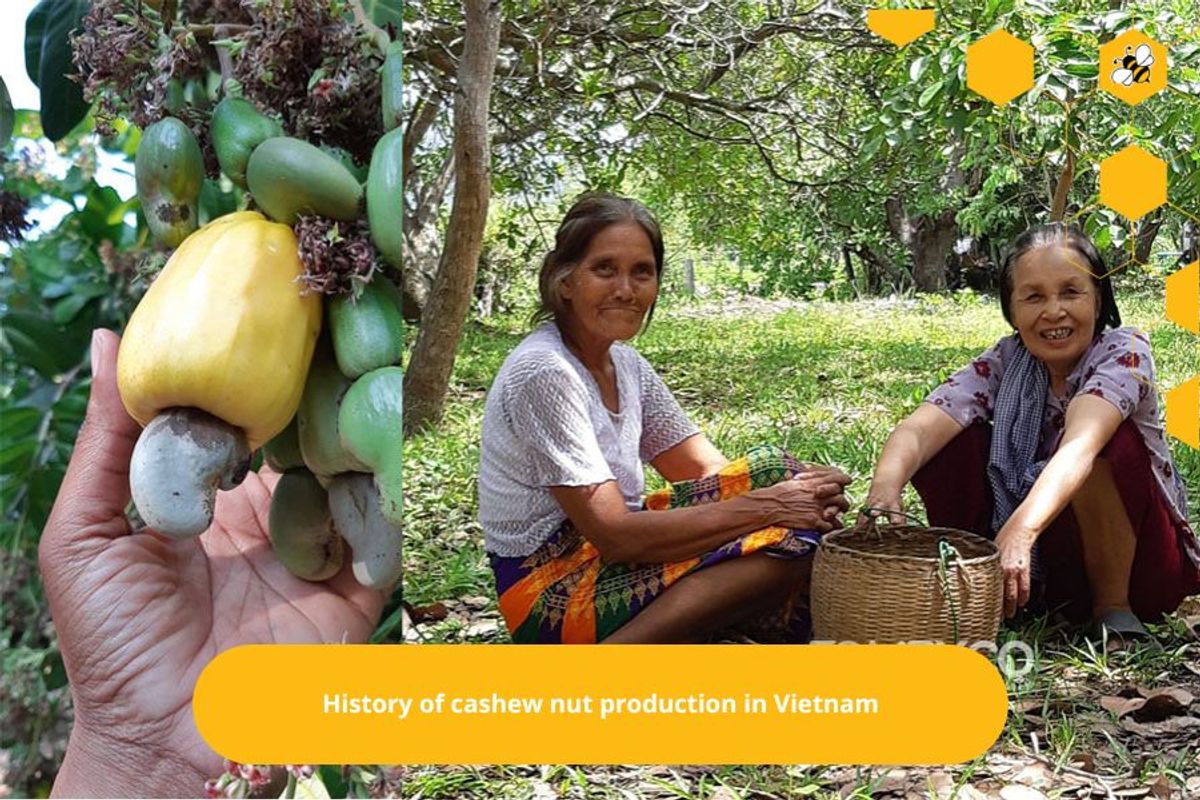
Summary
Cashew production and processing is a rapidly growing industry today. It promises to bring economic potential to growers as well as cashew processing and exporting enterprises around the world. The world's cashew export market is showing a strong development trend, which is an opportunity for Vietnam's cashew export industry.